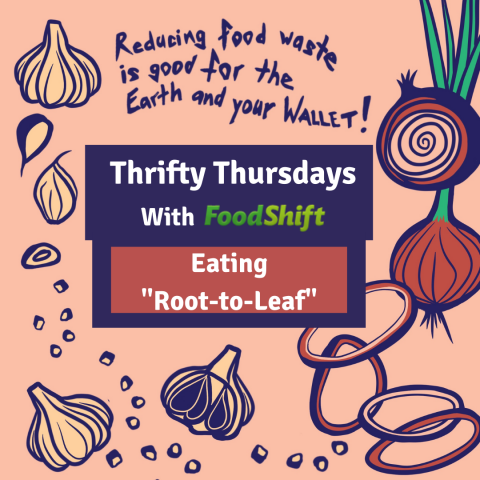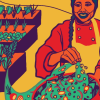Just as a butcher respects the life of an animal by utilizing all of its parts, we can honor the energy, resources, and intricate natural processes that went into growing the plants we eat by making full use of the plants’ parts. By using as much of the plant as we can, we get closer to bringing out its full potential, while also stopping food waste in its tracks.
In many cases, we may simply not know that a given part of a plant is edible, or how to prepare it. For instance, an often-overlooked part of the carrot is its precious fern-like fronds. You might be used to tossing them directly into the compost bin, but carrot fronds are actually the perfect base for a fresh, zingy pesto. In her latest video, Chef Jen walks you through the surprisingly simple process of transforming those fronds into a versatile sauce that can be tossed with pasta, eaten with chips, or even drizzled over those same carrots you started with, now roasted till succulent.
Food Shift's Carrot Top Pesto
Feel free to swap out the herbs or use other nuts and seeds. This is just a template so utilize what you have in your refrigerator and pantry.
Ingredients
2 loose cups carrot fronds, rinsed, drained and dried
1 cup parsley (leaves and stems)
1/2 cup toasted pumpkin seeds
1 medium clove garlic, smashed
1/2 tsp lemon zest
1 Tbsp lemon juice
1/4 tsp salt
pinch black pepper
1/4 - 1/3 cup olive oil
Procedure
- Add carrot fronds and parsley to a food processor and pulse together.
- Add the pumpkin seeds, garlic, lemon zest, lemon juice and salt and pepper. Run the food processor until everything is combined.
- While the food processor is running, drizzle in ¼ cup of olive oil and continue processing until the pesto is smooth. Add more oil if necessary to get a smooth consistency. Season to taste.
Learn more about Food Shift and their programs to rescue surplus food that would otherwise waste away in landfills and utilize it to fuel their social enterprise kitchen.












